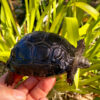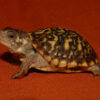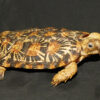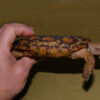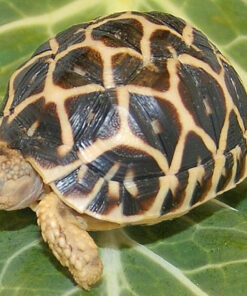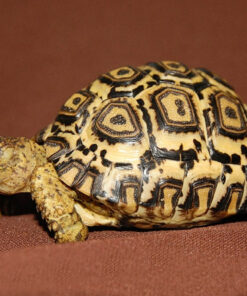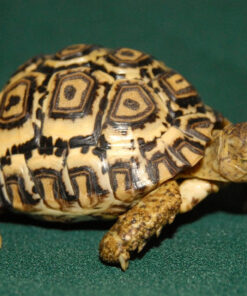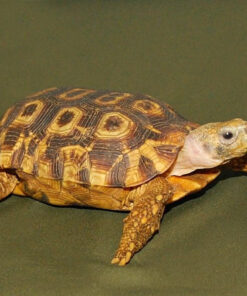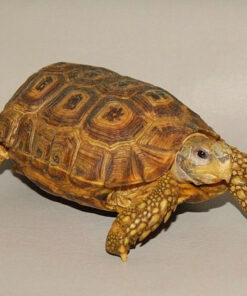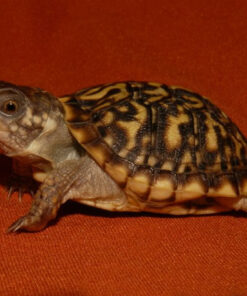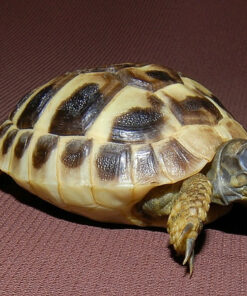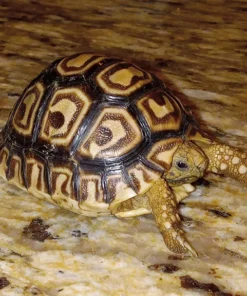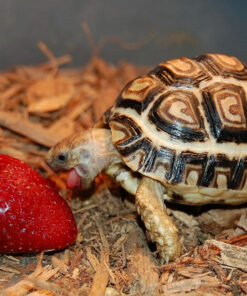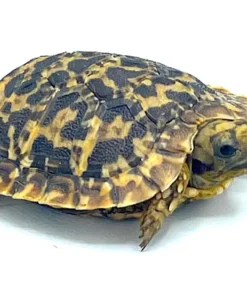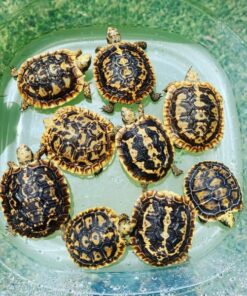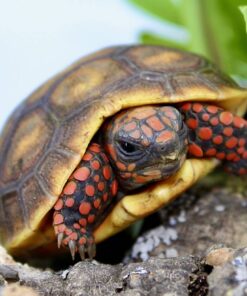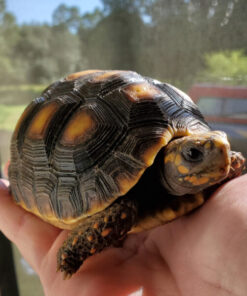$799.99
The Pancake Tortoise for sale (Malacochersus tornieri) is one of the most unique and interesting reptiles found in the world. Native to East Africa,
Pancake Tortoise for Sale: Add a Unique, Rare Reptile to Your Family
If you’re looking for a truly unique tortoise with a personality as distinct as its appearance, the Pancake Tortoise (Malacochersus tornieri) might be just the pet you need. Known for their fascinatingly flat shells, Pancake Tortoises are a favorite among reptile enthusiasts due to their quirky looks, climbing skills, and gentle personalities. Originally from East Africa, these rare tortoises are sought after for their engaging nature and easy-going care needs. In this guide, we’ll explore why the Pancake Tortoise is such a standout, how to set up the perfect habitat, and why getting your tortoise from a trusted source ensures a healthy, well-cared-for new pet.
Why Choose a Pancake Tortoise?
The Pancake Tortoise is unlike any other tortoise you’ll come across. Their shell is flat and lightweight, giving them the flexibility to squeeze into tight spaces and climb rocky surfaces with ease—skills that are hard to find in other tortoise species.
- Distinctive Appearance: Unlike the traditional dome-shaped shell, the Pancake’s shell is flat and flexible, allowing it to hide in crevices when threatened. This unique adaptation is more than just looks; it helps the Pancake Tortoise survive in rocky landscapes.
- Gentle and Low Maintenance: With a calm temperament and relatively small size (about 6-7 inches), Pancake Tortoises are ideal for indoor enclosures, making them great for both new tortoise owners and seasoned reptile keepers.
- Engaging Personality: Pancake Tortoises are active, curious, and enjoy exploring their surroundings. Their climbing and hiding behavior adds a fascinating dynamic to any reptile collection.
With a captivating personality and unique adaptations, the Pancake Tortoise makes an ideal pet that can live for decades with proper care.
Setting Up the Ideal Pancake Tortoise Habitat
Creating a suitable habitat is essential to keep your Pancake Tortoise healthy and happy. Originating from warm, rocky regions, these tortoises thrive in a setup that mimics their natural environment.
1. Enclosure Setup
- Size and Space: A 4×2-foot enclosure is typically sufficient for a single Pancake Tortoise, though a larger setup with hiding spots is ideal for multiple tortoises to reduce stress.
- Substrate: Use a mix of soil and sand to mimic their native environment. Dry grass or hay on top of the substrate can add a comfortable, natural feel.
- Rocks and Hides: Since they’re used to rocky crevices, include rock slabs or hideouts to give them places to retreat. These hiding spots add a sense of security and allow them to engage in their natural behaviors.
2. Temperature and Lighting
To keep them comfortable, maintain warm and dry conditions similar to their natural habitat.
- Heat and Basking Spot: Aim for an ambient temperature around 80°F, with a basking area at 90-95°F. A good heat lamp can help achieve this, while a cooler zone in the enclosure allows them to regulate their body temperature.
- UVB Lighting: Pancake Tortoises need UVB exposure for calcium metabolism and shell health. Keep a UVB light on for 10-12 hours daily to replicate natural sunlight and support their well-being.
3. Humidity and Water Needs
Since Pancake Tortoises come from dry climates, they’re adapted to low humidity levels.
- Humidity: Keep humidity around 30-40%, which is closer to their native, dry environment. Overly humid setups can cause respiratory issues, so it’s crucial to monitor the enclosure.
- Water Dish: Although they don’t need high humidity, provide a shallow water dish for drinking and occasional soaking. Change the water daily to ensure freshness and cleanliness.
Feeding Your Pancake Tortoise
Pancake Tortoises are herbivores, thriving on a diet rich in leafy greens, vegetables, and small amounts of fruit.
1. Main Diet
- Leafy Greens: Feed a variety of leafy greens like kale, dandelion, and collard greens, which offer essential nutrients and calcium for shell strength.
- Vegetables: Mix in vegetables like carrots, squash, and bell peppers for added variety and nutrition.
- Occasional Fruit: Limit fruit to small treats like apple or melon pieces, as fruits are naturally high in sugar.
2. Calcium and Supplements
To keep your Pancake Tortoise healthy, dust their greens with calcium powder two to three times a week, and add a multivitamin once a week. This ensures they get the nutrients needed for strong bones and a healthy shell.
3. Avoid Toxic Foods
Avoid feeding foods like spinach or iceberg lettuce, as these can interfere with calcium absorption or cause digestive problems. Stick to tortoise-safe veggies and limit sugary fruits to keep them in peak health.
Frequently Asked Questions about Pancake Tortoises
Q: How long do Pancake Tortoises live?
A: With good care, Pancake Tortoises can live 25-30 years or more, making them a long-term commitment and rewarding lifelong pet.
Q: Are Pancake Tortoises good for beginners?
A: Yes! With their low-maintenance care needs and easy-going personality, Pancake Tortoises are a great choice for beginners and experienced reptile keepers alike.
Q: Do Pancake Tortoises need a companion?
A: Pancake Tortoises are typically solitary and may become stressed if housed with others. If you’re considering multiple tortoises, make sure they have enough space and hiding spots to avoid territorial issues.
Add a Pancake Tortoise to Your Collection Today!
Ready to bring home a rare and fascinating pet? Pancake Tortoises are a one-of-a-kind addition to any reptile collection. Their friendly nature, unique appearance, and easy-care requirements make them ideal for reptile lovers of all levels. we’re dedicated to helping you find the perfect tortoise and providing all the resources you need for proper care. Explore our available Pancake Tortoises for sale and start your journey with this incredible species today!
Related products
TORTOISE for sale
TORTOISE for sale
Baby Giant South African Leopard Tortoise – Exotic Pets for Sale
TORTOISE for sale
TORTOISE for sale
TORTOISE for sale
Baby Pancake Tortoise for Sale – Exotic Pet with Unique Shell

